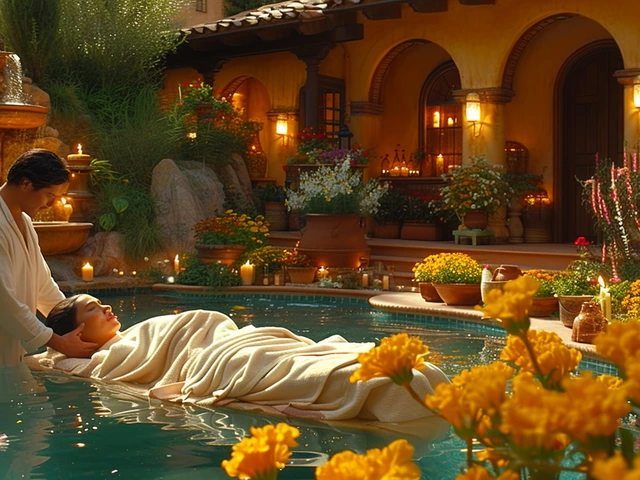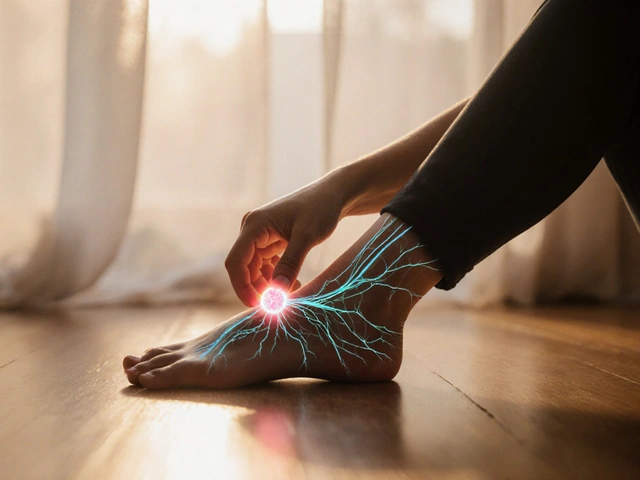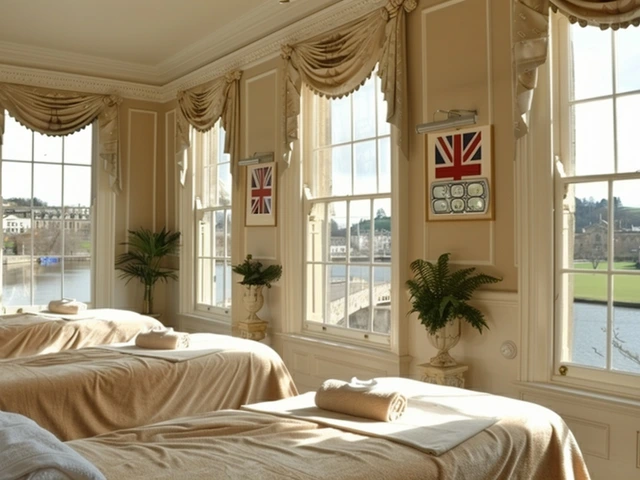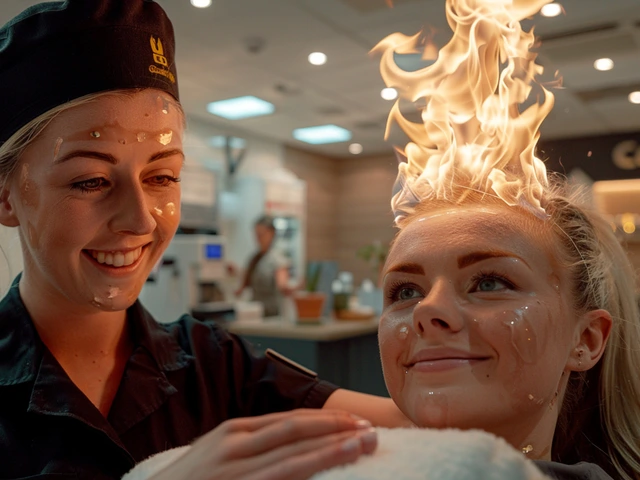The Hammam Ritual: A Step-by-Step Guide for Beginners
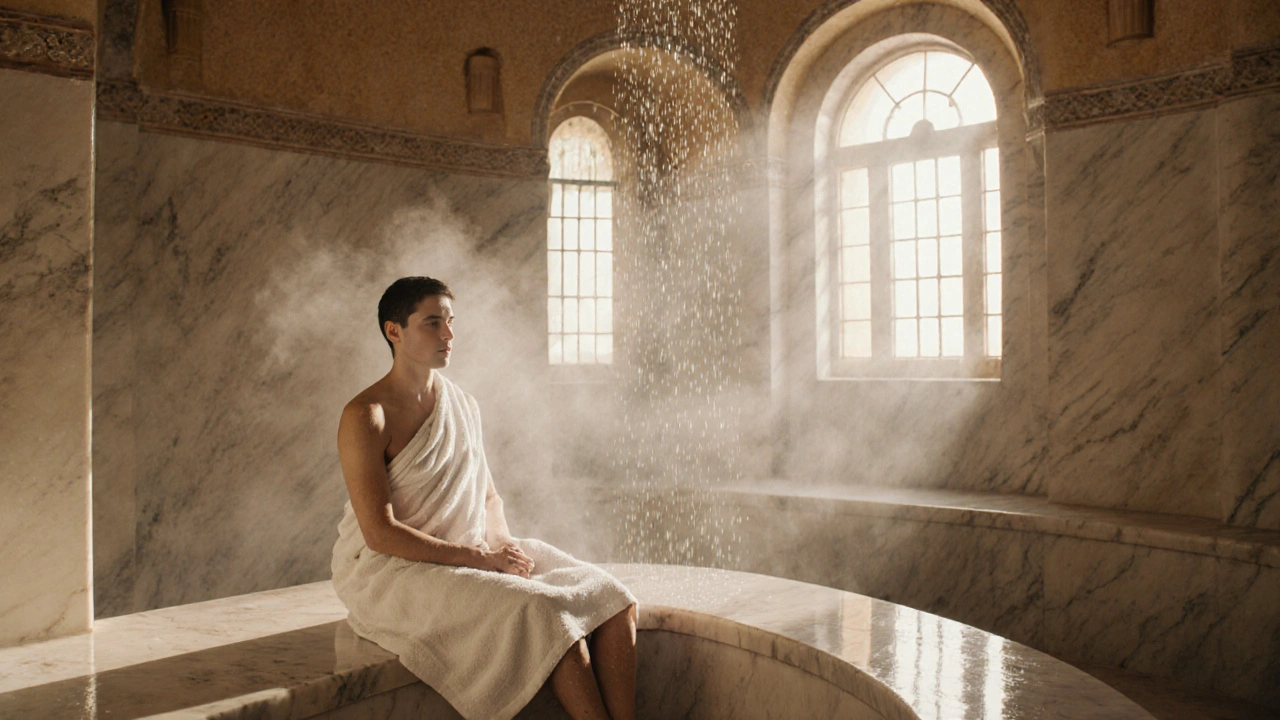
Imagine stepping into a room where the air is thick with warmth, the scent of black soap lingers, and the sound of water dripping echoes softly off marble walls. This isn’t just a shower-it’s a hammam ritual, a centuries-old cleansing practice rooted in Ottoman, Arab, and North African traditions. If you’ve ever wondered what it’s like to experience a true hammam, especially if you’ve never tried one before, this guide breaks it down simply, honestly, and without fluff.
What Exactly Is a Hammam?
A hammam, also called a Turkish bath, isn’t just a steam room. It’s a full-body purification process that combines heat, steam, scrubbing, and rinsing. Unlike a sauna, which dries you out, a hammam hydrates your skin while deeply cleansing it. The space is usually made of marble or tile, with heated floors and walls. There are typically three rooms: one for undressing and cooling down, one for the steam room (with temperatures around 40-45°C), and one for the washing area where scrubbing and rinsing happen.
People have used hammams for over a thousand years-not just to get clean, but to relax, heal, and socialize. In cities like Istanbul, Marrakech, and Fez, hammams were community hubs. Today, they’re still used in those places, and now you can find them in spas across Sydney, London, and New York.
Why Try a Hammam Ritual?
Most people think of hammams as luxury experiences, but the real benefits are practical and physical. After just one session, you’ll notice:
- Your skin feels softer than after any exfoliating scrub you’ve used at home
- Your muscles feel looser, especially if you’ve been sitting at a desk all day
- Your breathing feels easier-the steam clears your sinuses naturally
- You feel calmer, not just from the heat, but from the rhythm of the process
A 2023 study in the Journal of Alternative and Complementary Medicine found that regular hammam users reported a 34% reduction in muscle stiffness and improved skin hydration levels after just four sessions. It’s not magic-it’s science. The heat opens pores, the steam loosens dirt and oil, and the scrubbing removes dead skin cells that regular soap can’t touch.
Step 1: Prepare Before You Go
You don’t need special gear, but you should bring the right things:
- A towel or two (some places provide them, but it’s safer to bring your own)
- A change of clothes for after
- Flip-flops or sandals (the floors are wet and warm)
- A small bottle of water (you’ll sweat a lot)
- No makeup, no heavy lotions, no oils
Don’t show up right after a big meal. Wait at least two hours. And don’t go if you’re feeling dizzy, pregnant, or have a heart condition-heat affects everyone differently.
Step 2: Enter the Warm Room
Once you’re inside, take off your clothes and wrap yourself in the towel. Walk slowly into the first warm room. This isn’t the steam room yet-it’s meant to get your body used to the heat. Sit or lie down on one of the marble benches. Let your skin adjust. Stay here for 5 to 10 minutes. Breathe deeply. Don’t rush.
This is where you start to sweat. You might feel a little uncomfortable at first. That’s normal. Your body is warming up. This step is critical. If you skip it, the steam room will feel too intense.
Step 3: Move to the Steam Room
Now, walk into the hotter room. The temperature here is higher-usually 40-45°C. The air is wet, thick, and heavy. You’ll hear water trickling from the central dome. This is where the real cleansing begins.
Find a spot on the bench and lie back. Let the steam soak into your skin. Stay here for 10 to 15 minutes. If you feel lightheaded, stand up slowly and step back into the warm room. Drink water if you have it.
Some places offer eucalyptus or mint infusions on the walls or in bowls. Breathe that in. It helps open your airways. This part isn’t just about cleaning your skin-it’s about resetting your nervous system.
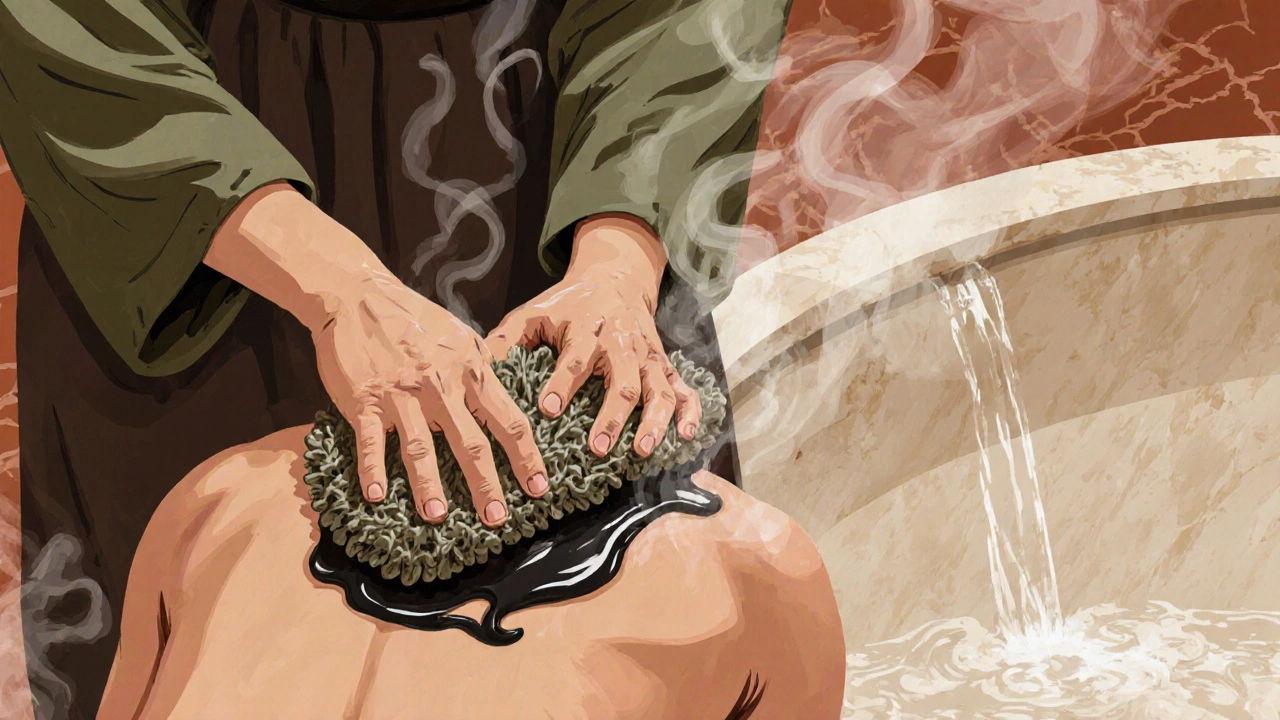
Step 4: The Scrubbing (Kese)
This is the part most people don’t expect-and the one they remember the most. A hammam attendant (often called a tellak) will call you over. They’ll hand you a rough mitt made of kese, a coarse fabric woven from natural fibers. They’ll apply black soap-a thick, olive-oil-based soap made with argan or laurel oil-over your entire body.
Then, they’ll scrub you. Not gently. They’ll use firm, rhythmic strokes, moving from your feet up to your shoulders. You’ll feel every dead skin cell lifting off. It might sting a little at first, especially on your back or heels. But it’s not painful-it’s therapeutic. The scrubbing removes up to 90% of surface dead skin, far more than any loofah or brush can.
If you’re doing this yourself at home, you can buy a kese mitt online. But don’t try to scrub too hard. The goal isn’t to raw your skin-it’s to reveal the fresh layer underneath.
Step 5: The Rinse
After the scrub, you’ll be led to a central platform or basin. Cold water is poured over you-first from the head down, then in gentle streams over your arms and legs. The contrast between the heat and the cool water feels incredible. It closes your pores and shocks your system in the best way.
Some hammams use rosewater or lavender-infused water for this rinse. It leaves your skin smelling fresh and calm. Don’t rush this part. Let the water wash over you. Breathe. Feel the tension leave your shoulders.
Step 6: Rest and Rehydrate
Now, you’re done. But don’t jump up and leave. Wrap yourself in a towel and sit in the relaxation room. This is where the ritual truly settles in. You’ll be offered mint tea-sweet, strong, and served in small glasses. Sip slowly. Let your body cool down naturally.
Stay here for at least 15 minutes. Your skin is still absorbing moisture. Your heart rate is slowing. Your mind is quieting. This is the real reward-not the scrub, not the steam, but the stillness after.
What to Expect After Your First Hammam
Right after, your skin will glow. It’ll feel smooth, almost slippery. You might notice a slight redness-that’s normal. It fades within an hour. Your muscles will feel loose. Your breathing deeper. You might even feel a little sleepy.
Don’t shower again for at least 4 hours. Let your skin rest. Your natural oils have been reset. Applying lotion right away can clog pores again. Wait. Let your skin breathe.
Some people feel a little lightheaded afterward. That’s from the heat and the sudden cool-down. Sit down. Drink water. Don’t drive right away if you’re dizzy.
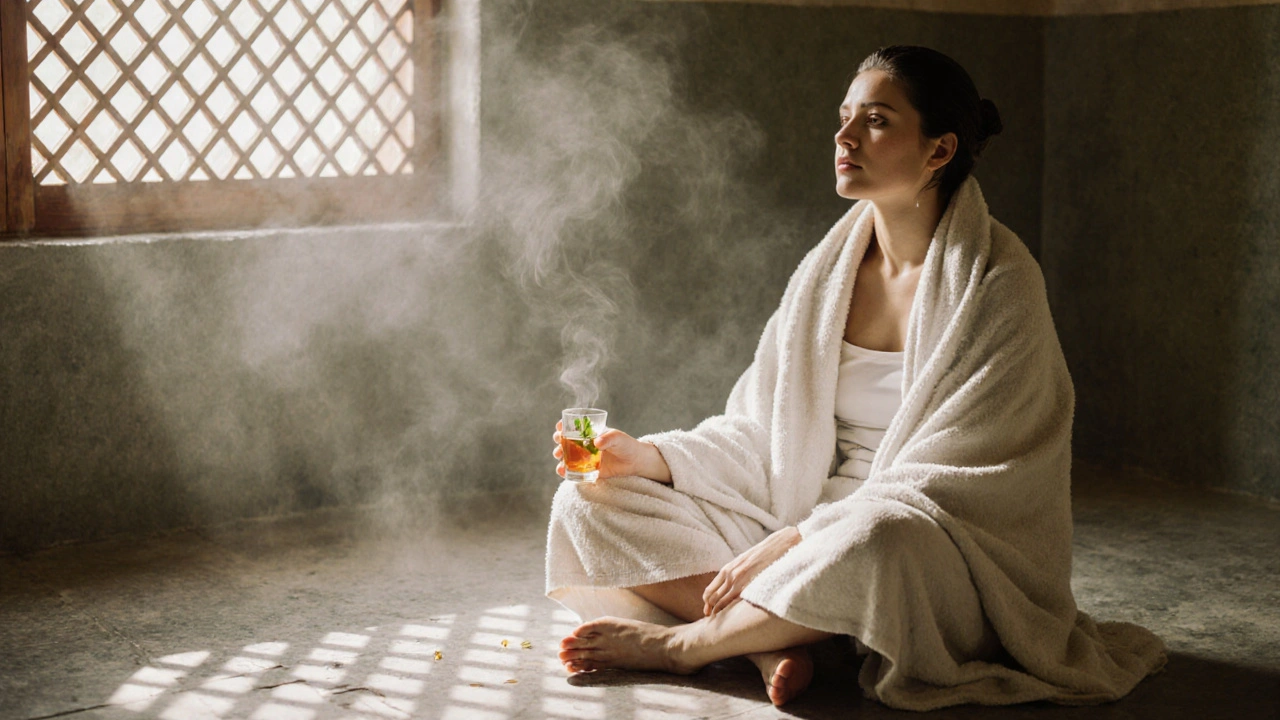
How Often Should You Do It?
Once a month is enough for most people. If you’re active, sweat a lot, or have dry skin, twice a month is fine. More than that can strip your skin’s natural barrier.
Think of it like a deep cleanse for your skin’s ecosystem. Too much, and you’ll irritate it. Too little, and you won’t feel the difference. Once a month gives your skin time to regenerate naturally.
Can You Do a Hammam at Home?
You can’t fully replicate a traditional hammam at home-but you can get close.
- Run a hot shower for 10 minutes to steam the bathroom
- Use a natural black soap (look for one with 100% olive oil and laurel oil)
- Buy a kese mitt (available on Amazon or Etsy)
- Scrub your body gently, then rinse with cool water
- Wrap yourself in a towel and sit quietly for 15 minutes
You won’t get the marble floors or the tea, but you’ll still get the core benefits: deep cleansing, relaxation, and skin renewal.
Common Mistakes Beginners Make
- Skipping the warm-up room-this leads to overheating
- Using harsh scrubs or loofahs instead of a kese mitt
- Applying lotion immediately after-this blocks the skin’s natural recovery
- Staying too long in the steam room-15 minutes is enough
- Trying to scrub themselves too hard-let the attendant do the work
The biggest mistake? Thinking it’s just a fancy shower. It’s not. It’s a ritual. Slow down. Pay attention. Let it happen to you.
Final Thoughts
The hammam ritual isn’t about looking good. It’s about feeling clean-not just on the surface, but deep down. It’s a reset button for your body. In a world where we’re always rushing, where we scrub and spray and rinse without ever really stopping, the hammam asks you to pause. To breathe. To let someone else take care of you for a little while.
You don’t need to travel to Istanbul to experience it. You just need to show up, be still, and let the steam do its work.
Is a hammam safe for people with sensitive skin?
Yes, but with caution. The black soap used in hammams is naturally gentle and free of synthetic chemicals. However, if you have eczema, rosacea, or active breakouts, avoid the scrubbing part. Stick to the steam and rinse. Always test the soap on a small patch of skin first. If your skin reacts badly, skip the hammam until your condition improves.
How long does a hammam session take?
A full traditional hammam session takes about 60 to 90 minutes. That includes warming up, steaming, scrubbing, rinsing, and resting. If you’re short on time, you can do a simplified version in 30 minutes-just steam, rinse, and rest. But you’ll miss the full benefit if you skip the scrub and rest.
Do I need to tip the attendant?
In many places, tipping is expected but not mandatory. In Turkey, Morocco, or Egypt, a tip of 10-15% is standard if you’re happy with the service. In Western spas, it’s often included in the price. If you’re unsure, ask beforehand. A small tip shows appreciation for the skill and care they put into your experience.
Can I do a hammam if I have tattoos?
Yes, but wait at least 6 weeks after getting a new tattoo. The heat and scrubbing can irritate fresh ink and cause fading or infection. Once your tattoo is fully healed, the hammam won’t harm it-in fact, the steam can help keep the skin around it soft and hydrated.
What’s the difference between a hammam and a sauna?
A sauna uses dry heat-often over 70°C-with low humidity. A hammam uses wet heat-around 40-45°C-with high humidity. Saunas are for sweating and detoxing. Hammams are for cleansing, exfoliating, and hydrating. You don’t scrub in a sauna. You don’t rinse with cold water in a sauna. The hammam is a full-body ritual. The sauna is just heat.

